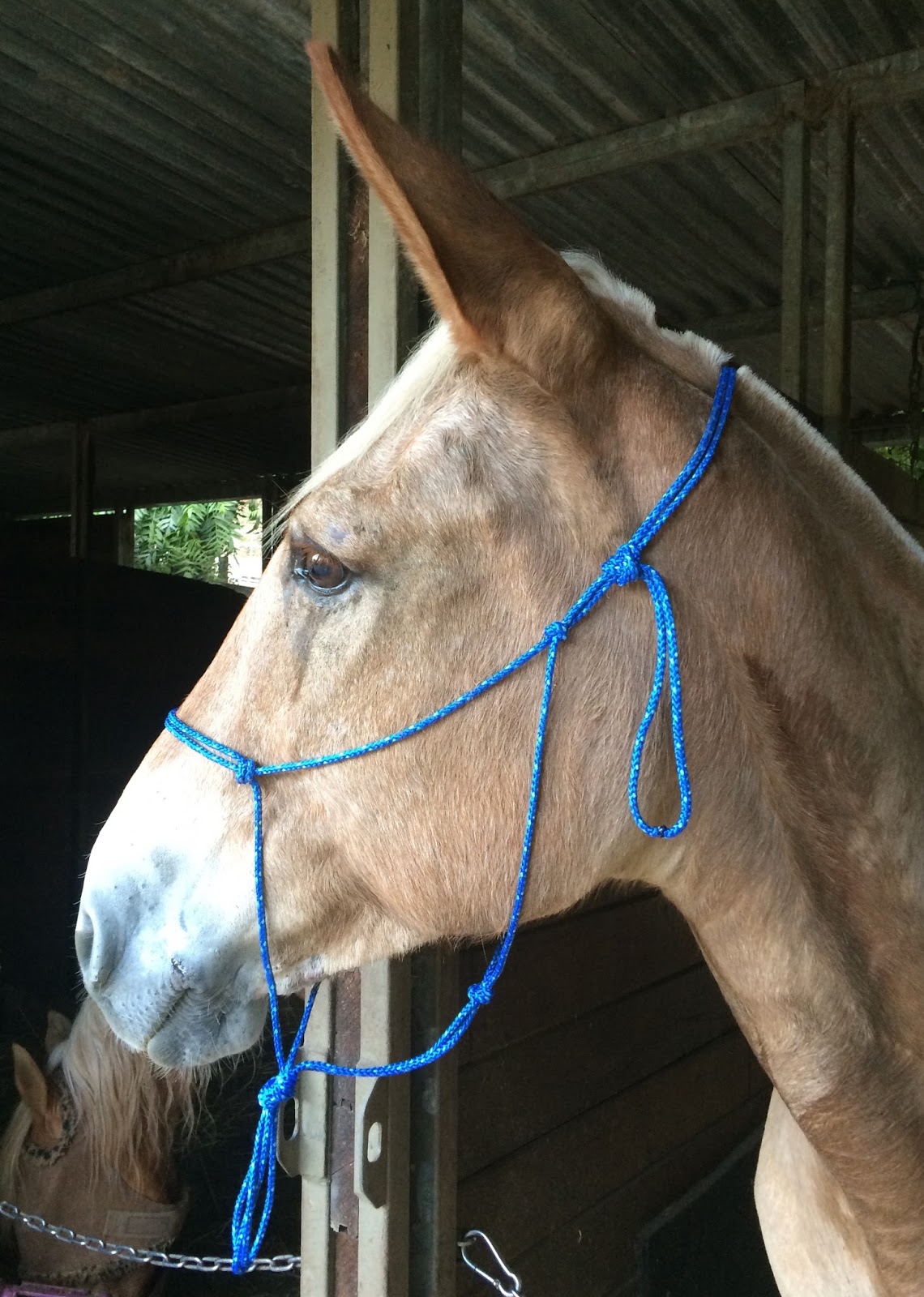Mastering the Rope Halter: A Comprehensive Guide
In the world of equine management, understanding how to properly fit a rope halter is a fundamental skill. It’s not just about tying a knot; it's about establishing communication and control while ensuring the horse's safety and comfort. This guide dives deep into the nuances of rope halter application, from beginner techniques to expert insights.
Imagine approaching a horse with confidence, knowing you can securely and comfortably place a rope halter. This seemingly simple act forms the basis of a strong horse-human relationship. Mastering this skill can significantly improve your horse handling experience. But how do you achieve this level of proficiency?
Rope halters offer a unique blend of control and gentleness. Their lightweight design and pressure-point system allow for precise communication, making them a popular choice among horse trainers and owners. However, incorrect usage can lead to discomfort or even injury for the horse. Understanding the correct techniques is therefore paramount.
The history of rope halters is intertwined with the development of horsemanship itself. While the precise origins are unclear, the principles behind their design—using pressure and release to guide the horse—have ancient roots. Early horsemen likely used simple rope arrangements for control, evolving over time into the sophisticated halters we use today.
A key challenge with rope halters is achieving the right fit. Too loose, and the halter becomes ineffective; too tight, and it can cause discomfort or restrict breathing. This guide aims to equip you with the knowledge to avoid these common pitfalls and confidently handle your horse.
Placing a rope halter involves several key steps: First, approach the horse calmly and confidently. Next, gently slip the noseband over the horse's nose, ensuring the knot rests under the chin. Then, bring the lead rope over the horse's poll (the highest point of the head) and through the loop on the other side. Finally, adjust the halter for a snug but comfortable fit. Remember, the halter should allow two fingers to fit comfortably between the rope and the horse's skin.
Benefits of correct rope halter usage include enhanced communication, improved responsiveness to cues, and greater control during handling. For example, a well-fitted rope halter allows for subtle pressure cues that can guide the horse's movements with minimal physical effort.
Advantages and Disadvantages of Rope Halters
| Advantages | Disadvantages |
|---|---|
| Lightweight and comfortable for the horse | Can be harsh if used incorrectly |
| Provides clear communication through pressure and release | Not suitable for tying horses securely |
| Durable and long-lasting | Requires proper fitting and adjustment |
Best Practices for Rope Halter Use:
1. Always approach your horse calmly and confidently.
2. Ensure the halter fits snugly but not too tight.
3. Use gentle, consistent pressure when cueing your horse.
4. Release pressure immediately when the horse responds correctly.
5. Regularly inspect your rope halter for wear and tear.
Frequently Asked Questions:
Q: How tight should a rope halter be? A: Snug enough to maintain control, but loose enough to allow two fingers to fit comfortably between the rope and the horse's skin.
Q: Can I leave a rope halter on my horse overnight? A: Generally not recommended, as it can pose a safety risk if the horse becomes entangled.
Q: Are rope halters suitable for all horses? A: While generally safe and effective, some horses may be more sensitive to pressure and require a different type of halter.
Q: What type of rope is best for a rope halter? A: Soft, durable ropes like yacht braid or poly-dacron are commonly used.
Q: How do I clean a rope halter? A: Rope halters can be washed with mild soap and water.
Q: How do I tie a rope halter knot? A: There are various knots suitable for rope halters, but a common one is the fiador knot.
Q: Where can I learn more about rope halter techniques? A: Numerous online resources, books, and clinics offer instruction on advanced rope halter techniques.
Q: Can I use a rope halter for training? A: Yes, rope halters are often used in horse training due to their precise communication capabilities.
Tips and Tricks: When fitting a rope halter, ensure the noseband sits high enough to avoid interfering with the horse's breathing. Practice adjusting the halter quickly and efficiently to minimize stress for both you and your horse. Observe experienced horse handlers to gain valuable insights into proper technique.
In conclusion, knowing how to put a rope halter on a horse correctly is a cornerstone of effective equine management. From ensuring the horse's comfort and safety to enhancing communication and control, the benefits of proper rope halter use are undeniable. Mastering this skill empowers you to build a stronger bond with your horse, enhancing your overall horse handling experience. While there are challenges in achieving the perfect fit and using the halter appropriately, consistent practice and attention to detail will ultimately lead to success. Invest time in learning the proper techniques, and you'll reap the rewards of a more confident and responsive equine partner. So, take the time to practice, seek guidance when needed, and remember that patience and persistence are key to achieving mastery in this essential horsemanship skill.
Tiny tokens of love exploring small family tattoo ideas for women
Email signature fonts make yours pop
Navigating the world of jawatan kosong e recruitment













